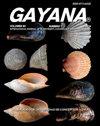委内瑞拉海洋生物入侵知识的现状:发展主题和时间趋势
IF 0.2
4区 生物学
Q4 ZOOLOGY
引用次数: 2
摘要
委内瑞拉是世界上海洋生物多样性最丰富的地区之一。尽管从历史上较高的旅游活动和海上运输中引入外来物种的风险很高,但该国没有最新的修订来审查生物入侵方面的主要进展和知识差距。本研究旨在回顾委内瑞拉海洋入侵的知识现状,确定主要研究主题以及空间和时间趋势。在多个科学数据库中进行的广泛文献综述显示,1998年至2018年间发表了35篇文章。研究主要在在……的东海岸进行。在被报道为外来或隐源的94个物种中,只有11个是在生物入侵的背景下进行研究的,其中大多数是首次记录。与世界大多数地区观察到的趋势相反,在过去十年中,研究数量有所减少,这可能与该国的社会政治局势有关。目前对委内瑞拉生物入侵的了解非常丰富。这种严重的信息缺乏限制了预防计划的进展,并增加了该国生物安全和海洋保护的风险。本文章由计算机程序翻译,如有差异,请以英文原文为准。
Estado actual del conocimiento de las bioinvasiones marinas en Venezuela: temáticas desarrolladas y tendencia temporal
Venezuela has one of the richest marine biodiversity areas in the world. Despite the high risk for the introduction of exotic species derived from historically high tourist activity and maritime transportation, the country does not have an updated revision to examine the main advances and gaps of knowledge in regards of biological invasions. This study aims to review the current state of knowledge regarding marine invasions in Venezuela, identifying the main research topics and the spatial and temporal trends. An extensive literature review carried out in multiple scientific databases showed that 35 articles were published between 1998 and 2018. Studies were conducted mainly on the eastern coast of the country. From the 94 species reported as exotic or cryptogenic, only 11 were studied under the context of biological invasions, most of them being first records. Contrary to the trend observed in most parts of the world, the number of studies decreased in the last decade, potentially related to the socio-political situation of the country. The current knowledge on biological invasions in Venezuela is pour. This important lack of information limits progress regarding prevention plans and increases risk for biosecurity and marine conservation of the country.
求助全文
通过发布文献求助,成功后即可免费获取论文全文。
去求助
来源期刊

GAYANA
Agricultural and Biological Sciences-Aquatic Science
CiteScore
0.60
自引率
0.00%
发文量
5
期刊介绍:
GAYANA is a scientific journal published by Universidad de Concepción, Chile. It is the modern version of Gayana Oceanología and Gayana Zoología. Therefore its numeration starts at volume 63(1).
GAYANA covers all aspects of zoology and oceanographic research. It is structured in five sections, defined by subject or discipline: Ecology, Biodiversity and Taxonomy, Earth Sciences, Evolutionary, and Applied Biology and Environmental Biology. Each section is in charge of an editor who receives and manages the manuscripts sent for evaluation in close collaboration with the editorial board.
 求助内容:
求助内容: 应助结果提醒方式:
应助结果提醒方式:


